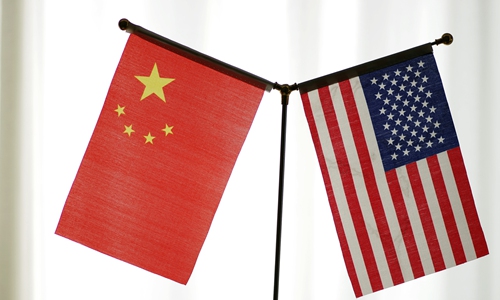HOME >> SOURCE
How will China’s economy withstand US tariff war?
Source:Global Times Published: 2019/12/8 21:11:30

File photo: VCG
How will China withstand the impact of US tariffs and the trade war? A look at the Chinese economy may offer some clues.The Chinese economy is nearing a key moment in its modern history as the entire country sprints toward achieving the first centennial goal of building a moderately prosperous society in all respects next year. According to the 13th Five-Year Plan (2016-20), China has several tasks. It needs to double its 2010 GDP and the per capita income of both urban and rural residents by 2020, as well as maintain medium-high economic growth. It must also accelerate the optimization and upgrading of the industrial structure, eliminate rural poverty, improve environmental conditions, and raise living standards in aspects like education, medical care, housing and elderly care.
Given the current economic situation, the expected GDP growth and other targets are widely considered reachable. In 2018, China's GDP already exceeded 90 trillion yuan ($13 trillion), putting it on track to accomplish the goal of doubling the size of its economy by 2020 from 2010.
Moreover, in its drive to build a well-off society by 2020, China has been transitioning its economy from a phase of rapid growth to one of high-quality development. The authorities have been advancing work on expanding and increasing consumption, reducing income inequality, and improving environmental protection.
As China is set to achieve all its 2020 goals, the country is no longer an export-dependent economy as its economic restructuring continues to unfold. A successful transformation will enable China to withstand external pressure with its own strong market.
Although China's economic transformation isn't happening overnight, the US-China trade war has apparently accelerated the process. To a certain extent, the long-lasting trade friction may cause the rearrangement and reorganization of the global supply chain, forcing some industries to move to other countries, affecting China's economic growth in the short to medium term. However, in the meantime, such external pressure may also spur indigenous innovation in China, pushing some domestic companies to develop high-end industries, which is exactly what the economic restructuring and transformation requires.
While US-China friction in trade and technology may be the new normal in the years to come, the dynamics of the Chinese economy itself will really determine the country's growth. As China moves fully into a moderately prosperous society, it also has the ability to further open its markets to the world, allowing other countries to share the dividends of China's rise.
Posted in: COLUMNISTS